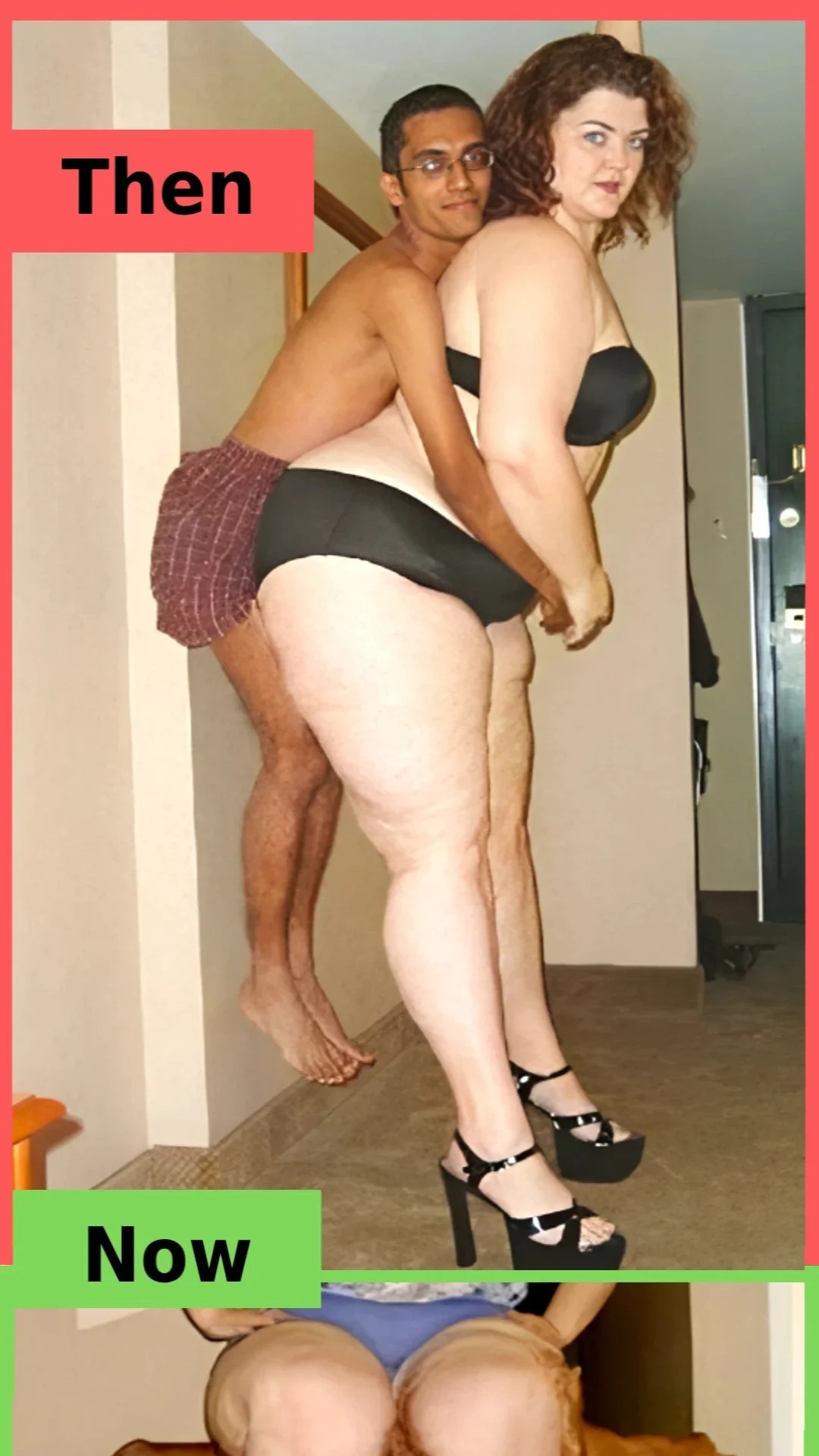When we see couples who seem physically mismatched — one tall, one short, one slender, one heavier, or simply strikingly different in appearance — we instinctively pause. They challenge our assumptions about attraction, those quiet expectations shaped by Hollywood, social media, and biology alike. For decades, psychologists have studied this phenomenon of “contrast couples” — partners whose physical traits sharply differ — trying to understand what draws them together and what these differences reveal about human connection.
At first glance, attraction appears simple. We tend to believe in homogamy — the idea that people are drawn to those who resemble them in background, habits, and even looks. It makes sense: familiarity feels safe. Similarity smooths the edges of daily life. Yet reality constantly contradicts this pattern. For every look-alike couple posting photos that could be mirror images, there’s another that breaks every aesthetic rule — and thrives because of it.
So what’s really going on beneath the surface?
Beyond Appearances: Attraction as Compensation
Psychologists often point to compensatory attraction — the tendency to seek partners who balance out what we feel we lack. It’s not a conscious calculation, but a subtle pull toward equilibrium. A tall man might be drawn to a petite woman not because of her size but because she evokes delicacy or care — qualities he doesn’t feel he embodies. A smaller partner might gravitate toward someone larger or stronger, not for protection alone, but because that physical contrast mirrors a sense of emotional safety they crave.
The same dynamic applies to body shape, energy levels, even temperament. A quiet, introspective person may fall deeply for someone vibrant and outspoken — not because opposites magically attract, but because that liveliness symbolizes freedom or confidence they secretly wish to claim. Each difference becomes an unconscious exchange: You lend me what I don’t have, and together, we feel whole.
This search for balance isn’t just psychological—it’s deeply emotional. Differences can create a sense of harmony, like complementary colors on a canvas. The contrast doesn’t clash; it completes.
The Body and the Mind: Weight, Height, and Symbolism
Body type and appearance still shape first impressions, but they also serve as emotional shorthand. A slender partner might represent lightness, agility, or restraint — qualities admired in a world obsessed with control. A partner with a fuller figure might embody warmth, comfort, or strength — a sense of groundedness amid chaos. When these opposites connect, it’s often because their contrast tells a deeper story about security, acceptance, and self-perception.
In many cases, one partner’s body challenges the other’s internalized standards. Loving someone who doesn’t fit conventional ideals can be a quiet rebellion against societal pressures. It says: I see something real, something beyond appearances. For those who’ve spent years feeling judged by mirrors or expectations, such relationships can feel liberating — like rewriting their personal definition of beauty.
Equilibrium and Emotional Healing
Many mismatched couples describe an almost magnetic chemistry rooted not in looks but in energy. The contrast between them often reflects complementary emotional states. One partner might be nurturing, the other fiercely independent. One cautious, the other daring. Instead of friction, their dynamic builds emotional symmetry. Each provides what the other unconsciously needs to grow.
From a psychological standpoint, this reflects projection and integration. We project onto others what we wish to cultivate within ourselves. Over time, being with someone so different can help us integrate those missing parts — confidence, vulnerability, spontaneity, or calm. In that sense, attraction becomes less about desire and more about self-evolution. These relationships don’t just satisfy needs; they stimulate growth.
Challenging the Idea of “Type”
Culturally, we’re conditioned to believe we all have a “type.” We talk about it as if it’s a law of physics — as though attraction must follow a consistent formula. Yet research shows that personal chemistry is far less predictable. What we call “our type” is usually just a shorthand for comfort zones — people who fit our expectations and validate our self-image.
Contrast couples break that pattern. Their attraction often begins with curiosity rather than instant recognition. One partner might think, You’re not what I imagined I’d fall for — and yet, something clicks. That spark often leads to deeper connection because it’s built on exploration rather than projection. When we step outside our usual preferences, we meet parts of ourselves we didn’t know existed.
The Deeper Connection: Beyond Physical Balance
While the physical differences draw attention, the real glue in these relationships runs deeper: emotional compatibility, shared humor, values, and resilience. The visual contrast simply highlights the complexity of love — how it resists simplification. In many cases, these couples experience a stronger sense of commitment, forged in the act of defying outside judgment. When society questions their pairing, it often strengthens their bond rather than weakens it.
And here’s the paradox: what looks mismatched on the outside often hides perfect alignment beneath. The tall and the short, the introvert and the extrovert, the reserved and the wild — they don’t cancel each other out. They create motion, tension, and growth. In that tension lies vitality.
Society’s Mirror and the Courage to Defy It
Contrast couples also expose how narrow society’s lens on attraction still is. We’re bombarded by imagery that equates love with symmetry, youth, and aesthetic harmony. When real people love across those boundaries — of body, age, race, or ability — it quietly pushes back against those limitations. It reminds us that attraction isn’t a formula; it’s a story written by two people who found something that feels right, even if it looks unconventional.
There’s courage in that kind of love. To love someone the world calls “mismatched” requires confidence and clarity. It says: I know what fulfills me, and it doesn’t have to make sense to you. That defiance — quiet or loud — is its own form of beauty.
Love as a Mirror of Growth
In the end, mismatched couples highlight a truth we often forget: attraction isn’t about replication but reflection. We’re not seeking a mirror image of ourselves; we’re seeking someone whose differences reveal our potential. Sometimes love shows up not as sameness, but as the challenge that pushes us toward balance.
What makes these relationships powerful isn’t contrast for contrast’s sake — it’s the deeper psychological dance beneath it. Each partner becomes a mirror for the other’s missing pieces, an invitation to evolve. Over time, what once looked like mismatch begins to look like perfect design.
Because love, at its core, has never been about fitting neatly into expectations. It’s about resonance — that strange, unmistakable pull between two souls who, despite their differences, recognize something undeniable in each other.
And maybe that’s the real psychology behind it all: we’re not drawn to what looks right on paper; we’re drawn to what makes us feel whole.

